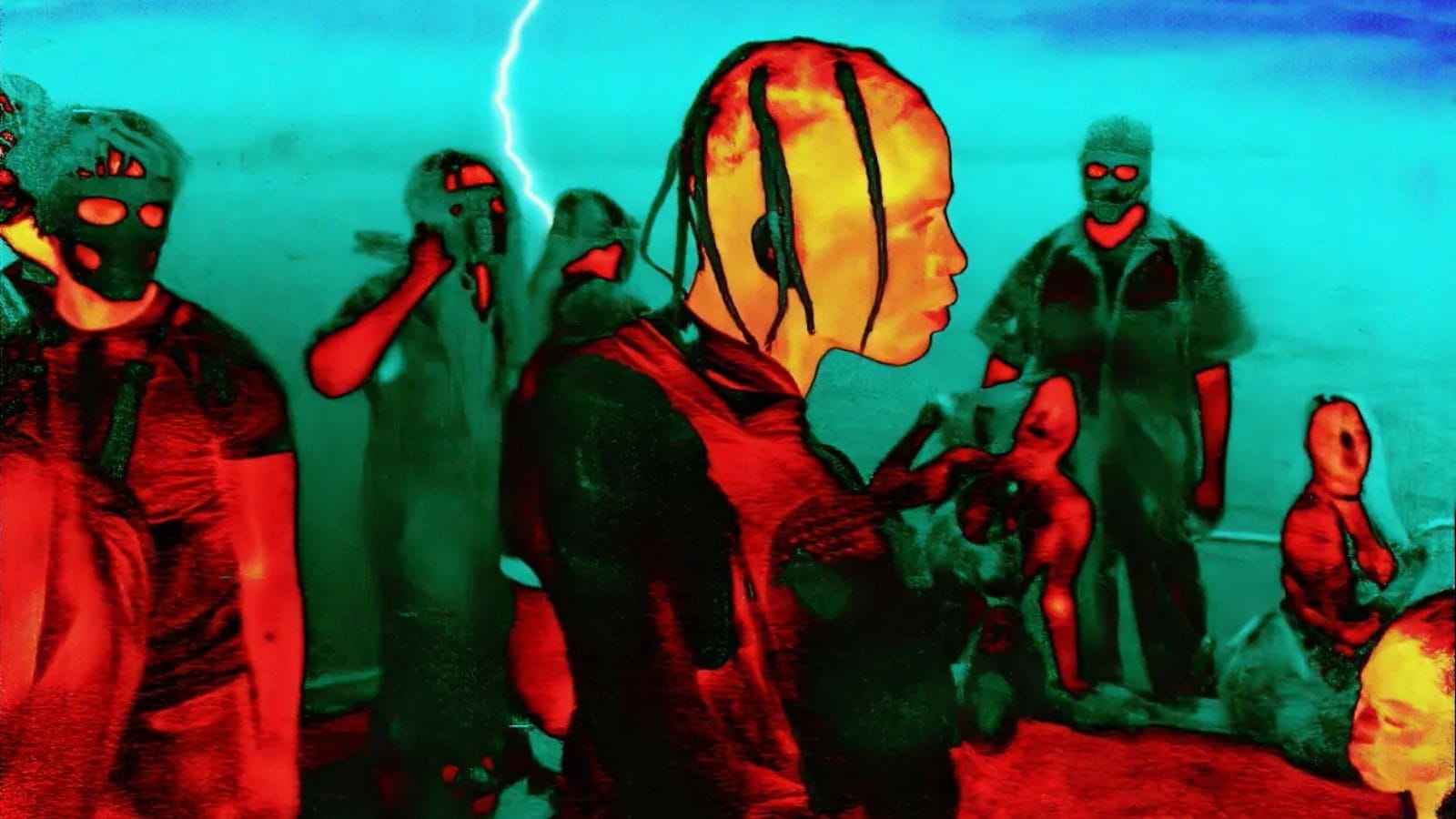Harmony Korine’s Aggro Dr1ft cedes control of its images to pure vibes. The film was shot entirely in thermal vision, resulting in a hallucinatory aesthetic of neon colors that simultaneously assaults and seduces the senses. The experience is akin to being locked in the disorienting POV of the Predator for 80 minutes. Coupled with an aggressive electronic soundscape courtesy of American DJ AraabMuzik, Korine’s film is a Miami Vice-on-acid stupor that’s less concerned with antiquated notions of coherent storytelling than in transporting (or perhaps banishing) audiences into another physiological realm altogether.
Jordi Mollà plays Bo, the self-proclaimed “best assassin in the world,” who’s nevertheless undergoing some kind of psychological or spiritual crisis—as indicated by his habitually troubled narration. Bailing on the next job given to him by his crime-lord boss, Pepe (Stet Blancett), he instead turns his sights toward killing his nemesis, a physically imposing and potentially infernal crime lord (Joshua Tilley, waltzing around like a pro-wrestling villain).
As Bo traverses Aggro Dr1ft’s feverish Miami underworld, he interacts with the kind of obtusely philosophical lowlifes that feel right at home in, well, a Harmony Korine film. One of these is Bo’s blunt-smoking assassin protégé, Zion (rapper Travis Scott), the leader of a militia group who, during a stripper-filled party on a yacht, briefly chats with Bo about the meaningless of books and to relay his mind-numbing day-to-day schedule of “I do. I sleep. I do. I sleep.”
Aggro Dr1ft uses it setup to forge a new movie-going experience, and one that’s foremost indebted to video games. (Not for nothing has Korine referred to the style of the film as “gamecore.”) Video game adaptations are a dime a dozen these days, and they typically conform to cinematic conventions. Aggro Dr1ft, on the other hand, transposes gaming’s visual logic to the screen in an authentically tangible way, from the vivid yet detached Grand Theft Auto-like levels of carnage to the stilted cutscene approach of the film’s non-action moments (most of the supporting characters suggest Sims in the way they move and speak). It’s not even that Korine necessarily makes us feel like we’re the player in some game, but more so that we’re actually trapped within the computerized inner workings of the software itself.
In fact, the entire landscape of the online realm feels like it’s being channeled throughout Aggro Dr1ft’s berserk fantasia. Korine has stated that his attention span for traditional movies has become practically nonexistent since the advent of social media, and he accordingly crafts much of the film like a series of kaleidoscopic TikTok videos. Much of Aggro Dr1ft’s footage is shrouded in animated filters, with many of the characters wearing shape-shifting masks and Zion wisping out a snake-like tongue in his close-ups. Meanwhile, an ominous demon hovers over the Miami skyline throughout as a portent of doom. Welcome, indeed, to the Dark Web.
One’s mileage will certainly vary on Aggro Dr1ft’s more maddeningly amusing traits. Ever the cinematic troll, Korine has his characters robotically state simplistic mantras like “I am a solitary hero” or “You are a coward” over and over and over again. It’s as if he wants to make you feel like it’s time to take the game cartridge out and blow on it to fix the glitch.
Less clear is what Korine is getting at with all the juvenile humor, as in a sequence in which a villain flanked by scantily clad women incessantly chants “Dance, bitches.” Women’s bodies are routinely on display, leading one to wonder if Korine is commenting on the objectification of women in media, particularly within the video game landscape, or if he’s simply indulging in garden-variety misogyny (his new production company is called EDGLRD, after all).
But whether Korine’s vaporwave fever dream actually means anything at all seems beside the point. The totality of Aggro Dr1ft’s simultaneously hyperactive and soothing audiovisual experience acts like a serotonin shot to the brain the longer one sits with it. It may indeed be the perfect cinematic representation of our current media landscape, adapting to our collective brain rot from being terminally online instead of fighting against it. If nothing else, the man behind provocations like Gummo and Trash Humpers continues to keep us on our toes, having crafted an experience that’s worth tripping out to, cotton mouth be damned.
Since 2001, we've brought you uncompromising, candid takes on the world of film, music, television, video games, theater, and more. Independently owned and operated publications like Slant have been hit hard in recent years, but we’re committed to keeping our content free and accessible—meaning no paywalls or fees.
If you like what we do, please consider subscribing to our Patreon or making a donation.






